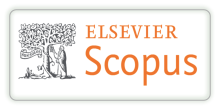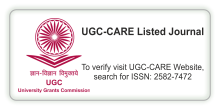THE CONCEPT OF ALAṄKĀRA IN SANSKRIT POETICS
DOI:
https://doi.org/10.29121/shodhkosh.v5.i1.2024.1773Keywords:
Indian Poetics, Aesthetics, Kāvya, Śāstra, AlaṅkāraAbstract [English]
As ornaments embellish the body, so do figures of speech adorn language. Traditionally and most commonly defined as ornamentation, Alaṅkāra transcends mere decoration, serving as a vital mechanism for evoking rasa - aesthetic experience and enhancing the emotional resonance of poetic works. These ornaments are classified into two main categories: Śabda-alaṅkāra (sound-based ornaments) and Artha-alaṅkāra (meaning-based ornaments). Śabda-alaṅkāra focus on the musicality and rhythmic aspect of language. Artha-alaṅkāra deal with the conceptual and interpretive aspect of language. Alaṅkāra plays an integral role in the poetic process as it bridges the gap between the literal and the figurative. Hence it enables poetry to transcend ordinary language and touch upon the sublime. In this way, alaṅkāra is not just a decorative element but a fundamental aspect of Sanskrit poetics, central to the creation and appreciation of poetic art. Ultimately, this exploration reaffirms alankara's status as an essential pillar of Sanskrit aesthetics, illuminating the profound connection between artistry and the human experience in the realm of poetry.
References
Bhamaha and Indian Poetics – Indian Literary Criticism and theory. (n.d.). https://ebooks.inflibnet.ac.in/engp11/chapter/bhamaha-and-indian-poetics/
Dandin and Indian Poetics – Indian Literary Criticism and Theory. (n.d.). https://ebooks.inflibnet.ac.in/engp11/chapter/dandin-and-indian-poetics/
Dandin’s Kavyadarsa, parichcheda 2. Edited with a new Sanskrit commentary and English notes by S.K. Belvalkar [and] Rangacharya B. Raddi : Dandin, 7th cent : Free Download, Borrow, and Streaming : Internet Archive. (1920). Internet Archive. https://archive.org/details/dandinskavyadars00danduoft/page/n5/mode/2up
Hindupedia, T. H. E. (2016, December 15). Alaṅkāra-śāstra - Hindupedia, The Hindu Encyclopedia. Hindupedia, the Hindu Encyclopedia. https://www.hindupedia.com/en/Ala%E1%B9%85k%C4%81ra-%C5%9B%C4%81stra
Indian Literary Theories: A Reappraisal (An Old and Rare Book) | Exotic India Art. (n.d.). https://www.exoticindiaart.com/book/details/indian-literary-theories-reappraisal-old-and-rare-book-nar358/
Kavyalankara : Sri Balamanorama Press : Free download, borrow, and streaming : Internet Archive. (1956). Internet Archive. https://archive.org/details/in.ernet.dli.2015.448260/page/n3/mode/2up
KavyaPrakash : Acharya Mammata : Free download, Borrow, and streaming : Internet Archive. (2012, July 14). Internet Archive. https://archive.org/details/KavyaPrakash/page/n13/mode/2up
Some concepts of the Alankara Sastra V. Raghavan : V. Raghavan : Free download, borrow, and streaming : Internet Archive. (2020, September 6). Internet Archive. https://archive.org/details/some-concepts-of-the-alankara-sastra-v.-raghavan/page/48/mode/2up
Sreenivasaraos. (n.d.). Vakrokti -jivita – sreenivasarao’s blogs. Sreenivasarao’s Blogs. https://sreenivasaraos.com/tag/vakrokti-jivita/
Downloads
Published
How to Cite
Issue
Section
License
Copyright (c) 2024 Nirali Rakesh Samani, Dr. Lalitha Santhanam

This work is licensed under a Creative Commons Attribution 4.0 International License.
With the licence CC-BY, authors retain the copyright, allowing anyone to download, reuse, re-print, modify, distribute, and/or copy their contribution. The work must be properly attributed to its author.
It is not necessary to ask for further permission from the author or journal board.
This journal provides immediate open access to its content on the principle that making research freely available to the public supports a greater global exchange of knowledge.































